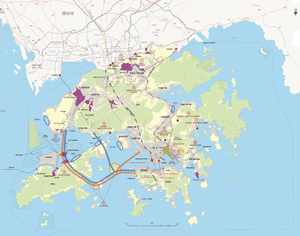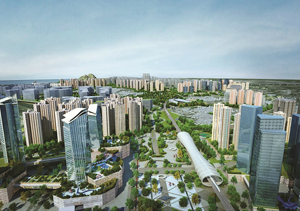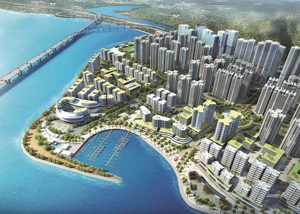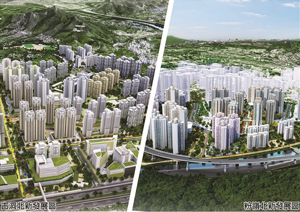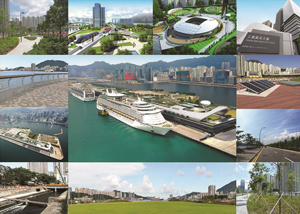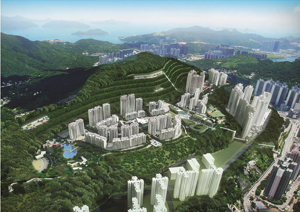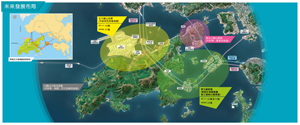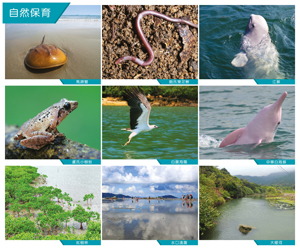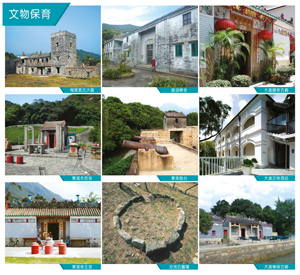Forge ahead and build consensus
|
Last week, Mr Zhang Dejiang, the Chairman of the Standing Committee of the National People’s Congress, visited the Development Bureau during his stay in Hong Kong. My colleagues and I briefed him on the overall supply of land, major preliminary proposals on Lantau Development, and Hong Kong’s long term planning vision and strategy. I believe you have considerable knowledge on these issues as information on such work has been publicised by various means (including papers submitted to councils, press releases, promotion on public consultation activities as well as my blog). I would like to share with you again some consolidated figures and information we mentioned before and presented to Mr Zhang. We have been adopting a multi-pronged approach on land supply through short, medium and long-term initiatives, striving to create land and ensure sufficient and stable land supply, as well as building up a land reserve. Currently, our work roughly covers land supply up to 2030. The short- to medium-term initiatives include: (1) increasing development intensity as appropriate and rezoning around 200 sites identified so far in land use reviews (including 42 short- to medium-term housing sites in relation to the various measures for increasing land supply mentioned in the 2013 Policy Address, and the some 150 sites with potential for housing development mentioned in the 2014 Policy Address). If all these sites are successfully rezoned, around 250 000 residential units can be provided; (2) the Kai Tak Development and Diamond Hill Comprehensive Development Area are capable of providing some 44 000 units; (3) three former quarries (in Cha Kwo Ling, Anderson Road and Lamma Island) can provide a total of around 13 000 units; (4) apart from the 23 000 units to be provided by projects tendered since July 2012, railway property development projects committed but yet to be tendered can provide another 15 000 units; and (5) around 2 600 units to be provided by projects implemented by the Urban Renewal Authority. These sources of short- to medium-term land supply account for more than 340 000 public and private residential units altogether, and this figure has yet to include other potential housing sites identified from our ongoing land use reviews, railway property development projects under discussion with the MTR Corporation Limited, as well as private redevelopment projects. As for medium- to long term initiatives, we are actively taking forward a series of land development projects, including the New Development Areas and new town extensions in Kwu Tung North and Fanling North, Hung Shui Kiu, Tung Chung and Yuen Long South; the Kam Tin South Development and the topside property development at Siu Ho Wan Depot. It is estimated that over 220 000 housing units, close to 8 000 000 square metres of industrial and commercial floor area, and some 230 000 job opportunities can be provided. In the long term, we will continue our efforts in taking forward the reclamation outside Victoria Harbour, rock cavern and underground space developments, as well as the development of Lantau and New Territories North. Although we have already covered the land supply sources up to around 2030, we have to continue our multi-pronged land supply strategy and must not slacken our efforts. There are views among the public that the current land planning projects alone can provide sufficient residential flats to cope with Hong Kong’s future population and household growth, thus rendering other land planning effort unnecessary; we do not agree with such views. We should bear in mind that according to the estimates of the Long Term Housing Strategy alone, more than 100 000 housing units are required to accommodate households living in poor environment. Moreover, while it is necessary for land planning and supply to make reference to population growth data, land demand does not merely arise from population, household growth and housing demand. From boosting the economy to improving livelihood to the enhancement of the living environment, living space, community facilities and transport infrastructure, sound planning is required in every way to provide more land and space. If we focus merely on the number of housing units and relevant population figures, we may overlook other imminent social issues that should be addressed, and even the various challenges lying ahead for Hong Kong. We will then fail to see the wood for the trees, and I suppose this is not a desirable land use planning for the public. In fact, Hong Kong is facing a myriad of opportunities and challenges, including new trends in global and regional development, economic globalisation, advancement in information technology, climate change, slowdown of population growth and an ageing population, as well as the city’s liveability. Therefore, we have to plan in advance to enhance Hong Kong’s liveability and competitiveness, create a better living space for the public, strengthen the pillar industries, cultivate emerging industries, and provide sufficient capacity to support sustainable development. Regarding living space, if we compare Hong Kong with some of our neighbouring regions, I believe the general public may feel that our living space is lagging behind that of many neighbouring cities. This is in stark contrast to our level of social and economic development. According to an academic research, Hong Kong’s per capita living space is less than 20 square metres. Such a figure is far below that of other densely-populated and economically advanced Asian countries like Singapore, South Korea and Japan, and not to mention European and American cities. In fact, Mr Zhang also expressed concern over the issue of small living space faced by Hong Kong citizens during the briefing on the work of Development Bureau. As mentioned in my blog last September, we will conduct the public consultation on the study of “Hong Kong 2030+: Towards a Planning Vision and Strategy Transcending 2030” in due course. We hope it will bring the community together to discuss the aforementioned issues, and offer our next generations a more liveable place for living, a better economic environment for work, a better road network for walking and a better living space for leisure. As for Lantau Development, I have already talked about the latest developments in my blog earlier and I will not repeat here. However, I noticed that there were claims that the model on Lantau Development shown to Mr Zhang during the briefing was not shown to the public during the public consultation, and it is doubted that we have withheld substantial information of the development from the public. I must clarify and emphasise here that the proposals on spatial planning, land use, and strategic traffic and transport infrastructure shown in the model completely tally with those set out in the Public Engagement Digest, including proposals on the East Lantau Metropolis and its affiliated infrastructures, as well as their approximate location and scale. Nothing was ever withheld. The subject model was only an aid to explain the concepts of Lantau Development, rather than a finalised proposal. There is no need for the public to worry too much. In fact, we are now analysing and consolidating the views collected from the public engagement exercise. We expect to publish the blueprint for Lantau Development at the end of this year, and set out a broad timetable for various studies and projects. We will, as always, continue to explain to the public the progress of our work in an open manner. We believe our work briefing to Mr Zhang would help the Central Government to keep abreast of the latest developments in Hong Kong. We will continue to forge ahead with various initiatives in accordance with established practices and procedures, as well as striving for consensus through better communication with the public, so that the initiatives can be implemented smoothly and bring benefits to the public as soon as possible. |
|
22 May, 2016
Back